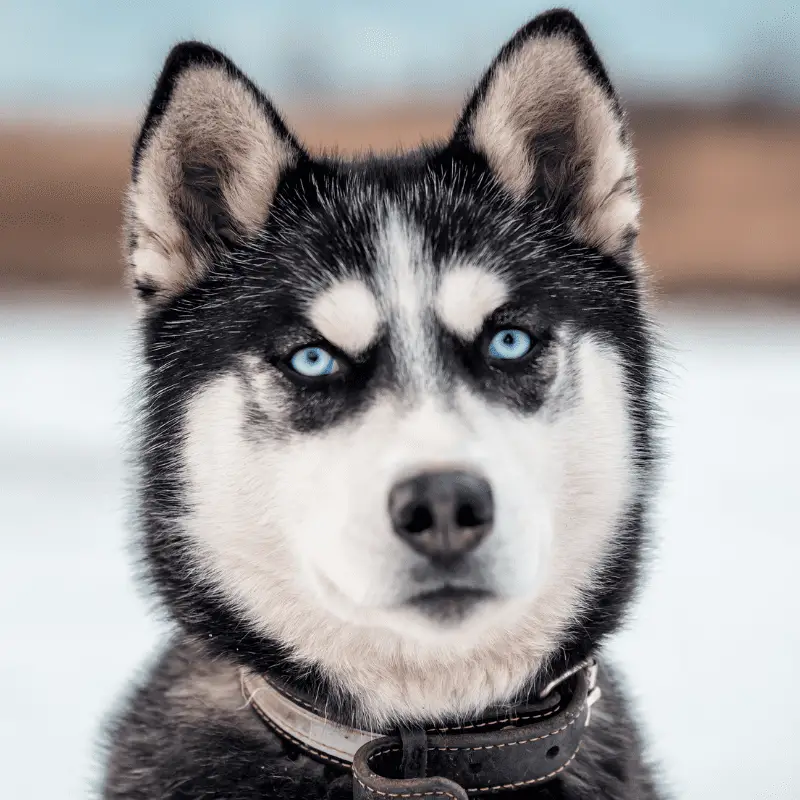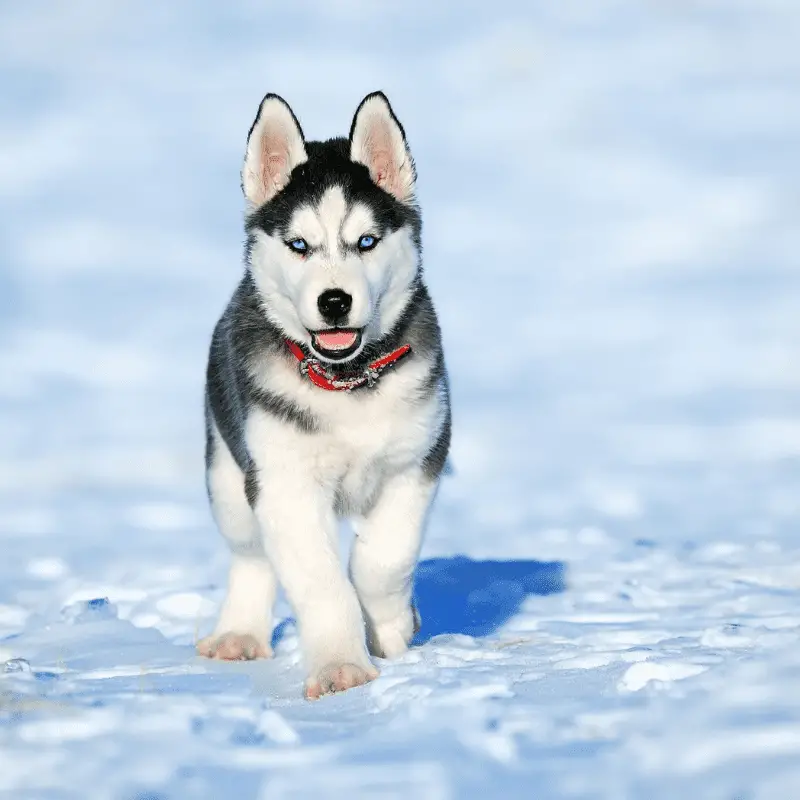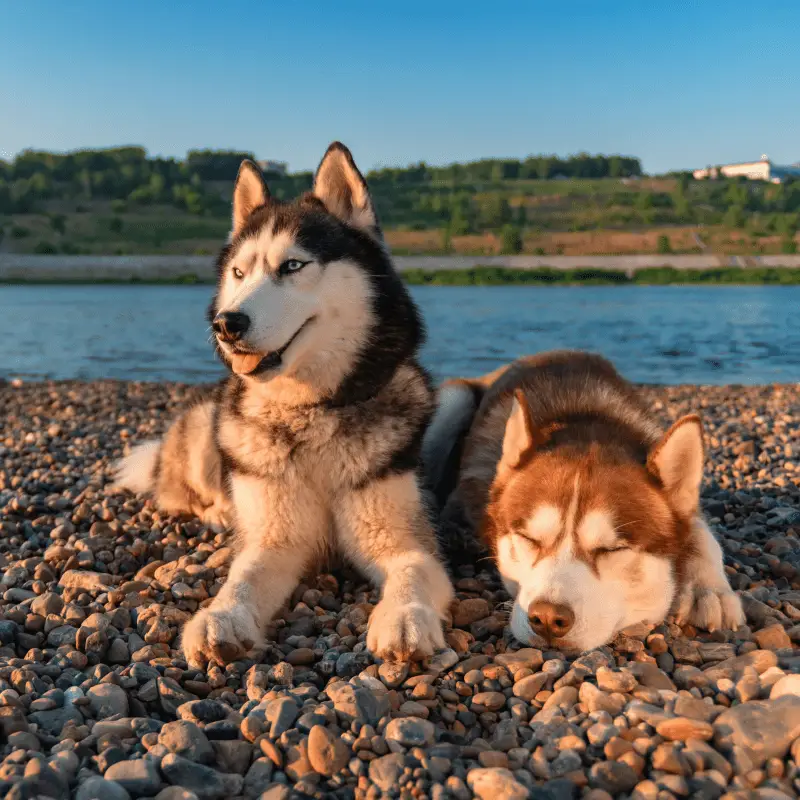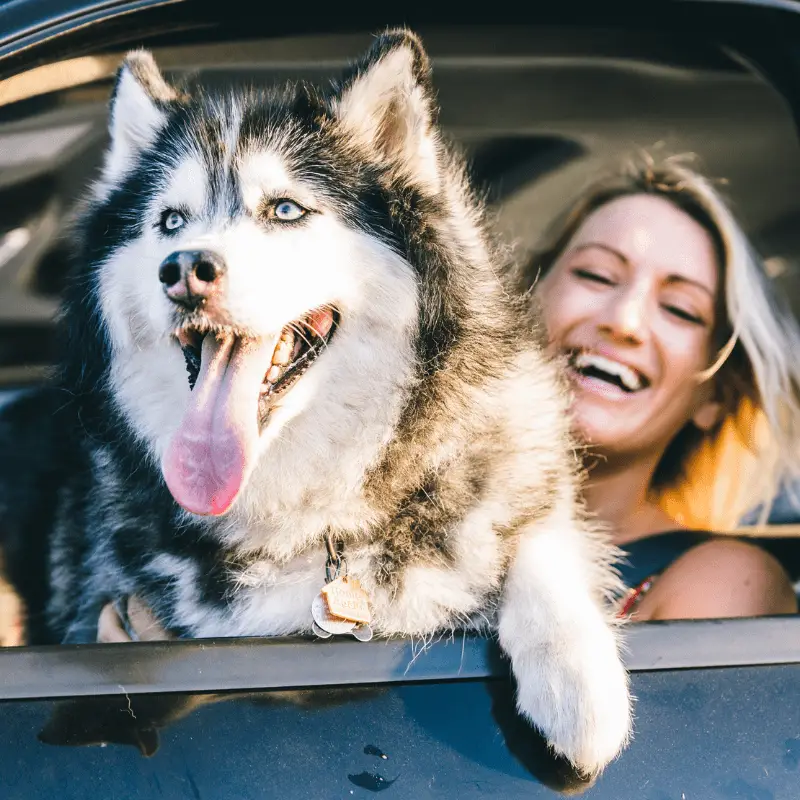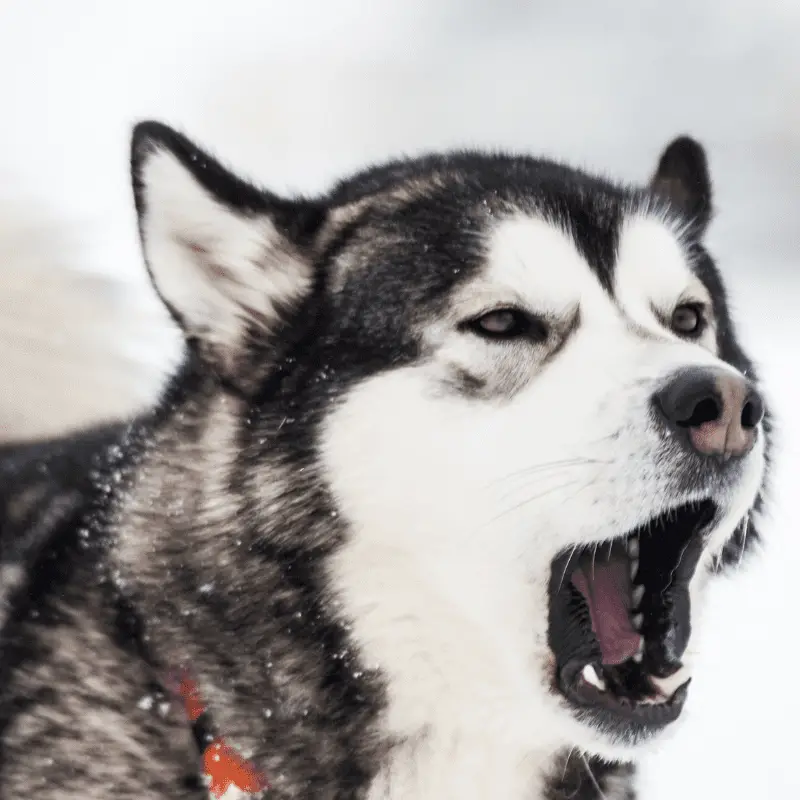Have you ever looked closely at the eyes of your dogs? Then you must have noticed the cute brown colour of your pet’s eyes. While most dogs have brown eyes, many Siberian huskies have striking blue eyes. The Huskies are famous for their eye colour. Some people even believe that the cold Siberian weather is the primary reason for this vivid blue eye colour.
All puppies are born with blue eyes; however, their eye colours change as they grow because more melanin pigment is produced. In huskies, blue eyes are caused by a mutated duplication near ALX4. This gene leads to fewer melanin pigments in the eyes of huskies. As a result, their eyes will stay blue.

Finding the truth about the blue eyes
To reach the bottom of this puzzle, the scientists needed to look beyond the dogs’ coat colours. They started to look for other factors that might result in blue eyes.
To do that, they conducted the largest ever study comparing the genetic profile of the huskies. The study helped the researchers understand that a genetic tweak can cause the dogs’ blue eyes. Researchers published their findings in the PLOS Genetics Journal by Aaron Sams and Adam Boyko of Embark Veterinary, Inc.
In that study, the scientists have tested the DNA of over 6,000 dogs. The owners of these dogs have purchased a DNA kit for identifying their dog’s breed and finding out more about their potential health conditions.
The access to the vast data helped the researchers to reach their decision. The willingness and participation of the dog owners in the online survey enabled them to make the right decision.
With the study’s help, the researchers found out that a genetic change in the canine chromosome 18 is strongly associated with the striking blue colour of the Siberian huskies eyes. The genetic change occurred near the ALX4 gene.
A road to the blue eye
The striking features and looks of the Siberian huskies help to accentuate the blue colour of their eyes. However, huskies are not the single dog breed with that icy blue colour. Several other dog breeds also come with different shades of blue eyes. The blue-eyed species are border collies, Pembroke and Welsh corgis, and Old English sheepdogs.
Several factors lead to this striking colour of the eyes of the dogs. However, the blue-eyed attribute is an inherited factor for these dog breeds. These dogs have inherited it as a recessive characteristic. That means these breeds require two mutated genes to get blue eyes.
The mutated genes not only cause loss of pigmentation in the eyes. It also leads to the light-coloured coats on the faces of these breeds. The difference between the blue eyes of these dog breeds and the Siberian Huskies is that they have blue eyes independent of the merle gene.
Not only dogs but humans can also have deep or light blue eyes. However, the reason for the blue eyes of humans is completely different. Blue eyes occur among humans thanks to the genetic variations of two other genes, known as the OCA2 and HERC2.
What makes the blue eyes of Siberian Huskies different
We already know the blue eyes in the huskies occur due to the genetic mutation of the ALX4 gene. Now, that gene does not directly generate blue pigments to change the colours of the irises. Instead, that mutation reduces the production of the colour pigments in the eyes of the huskies. The lack of pigments makes the eyes of the huskies appear blue.
The gene affects the pigmentation of the irises so that the range of colours can vary from rich blue to light blue. That means the blue colour of the Siberian huskies entirely depends on how the light makes an entry and exit their eyes. The eyes get the colour in the same way the sky gets blue. Even though the outer space is not blue, we see it as blue due to the scattered light.
That being said, you should note that this gene does not affect the pigmentation of the thick coat of these dogs. That is one reason why the Siberian huskies can have a dark coat and icy blue eyes at the same time.
This type of mutation is why sometimes even the Australian Shepherd has striking blue eyes. Even though this phenomenon was unexplained, this genetic study has clarified things.
Do all huskies have blue eyes?
No, not all huskies have blue eyes. The four eye colours of a Siberian husky are blue, brown, bi-colour and particoloured eyes.
Colour of the eyes of Siberian Huskies
If you are a fan of the Siberian Huskies, you must have noticed their eyes’ enthralling colour. Even though the Huskies are famous for their striking blue eyes, you can often find huskies with brown or split eyes.
To understand whether these different colours impact their optical health, you need to know more about the different eye colours of Siberian huskies. Here are some of the variations of eye colours that you can see in the huskies. Check it out.
Blue Eyes
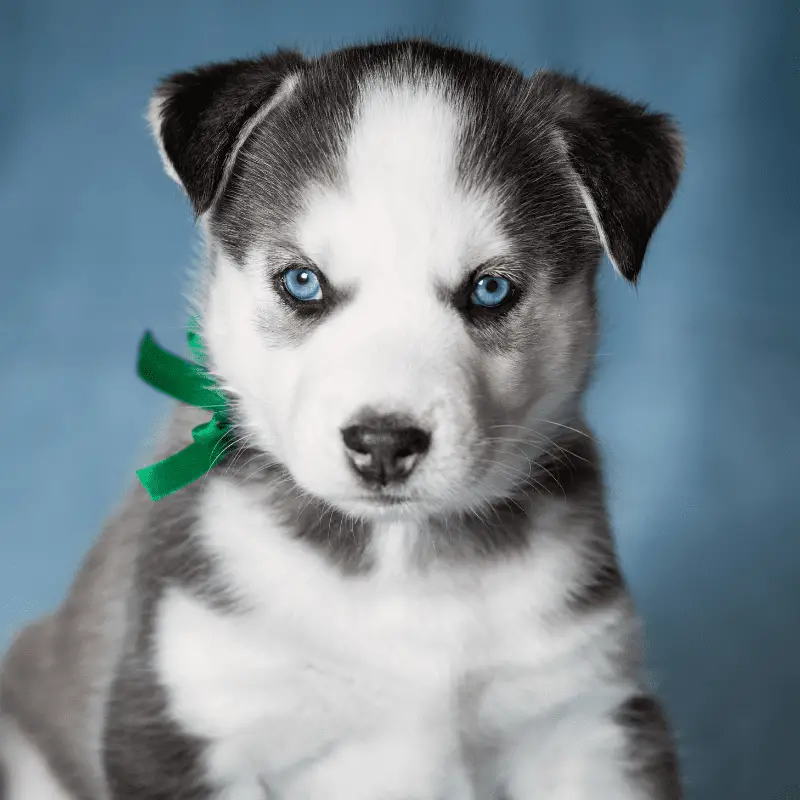
Blue eyes have built a staggering reputation for the dog breed. The icy yet beautiful blue eyes made the huskies look different from most dog breeds. Of course, the blue eyes are not that common in other dog breeds to have helped in this.
You cannot blame people for getting mesmerised by the incredible blue eyes of this dog breed. The blue eyes, dark coats, and friendly nature have made the Siberian Huskies one of the world’s most loved dog breeds.
While we talk about why huskies have blue eyes, let us bust some myths. There is a well-circulated myth that Siberian huskies often suffer from eye diseases, which is why the blue colour. The truth is, there is no scientific evidence that supports this myth. A genetic predisposition makes the eyes of some huskies blue. There is nothing to do with the assumed optical health issues.
Brown Eyes
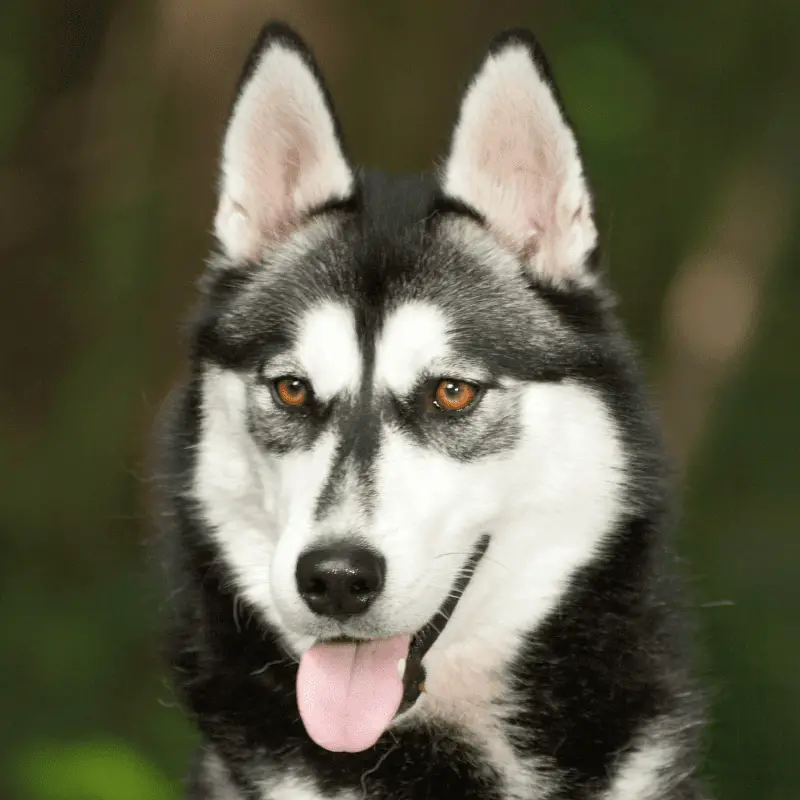
While the Huskies are famous for their icy blue eyes, many huskies have brown eyes. The unique coat of the huskies often makes the brown colour of their eyes look majestic. Like the blue colour, the huskies’ brownish tone can vary from the dark brown shades to the lighter ones.
Siberian huskies have a unique doubler layer coat. If you’re interested in learning about their fantastic coat, I have written about a Huskies coat and what you should never do.
Bi-coloured eyes

Even though it is a rare trait, you can still find Siberian huskies with two diverse eye colours. One eye has a vibrant blue colour in these dogs, and the other has deep brown.
As we have explained before, the bi-coloured Siberian huskies are rare. About 15% of Siberian huskies will have bi-colour eyes, and 5% of them have particoloured eyes. The canine experts point out that two would have blue and brown eyes out of five Siberian huskies. You can easily assume how rare it is to find Siberian huskies with two different eye colours.
Parti-coloured eyes
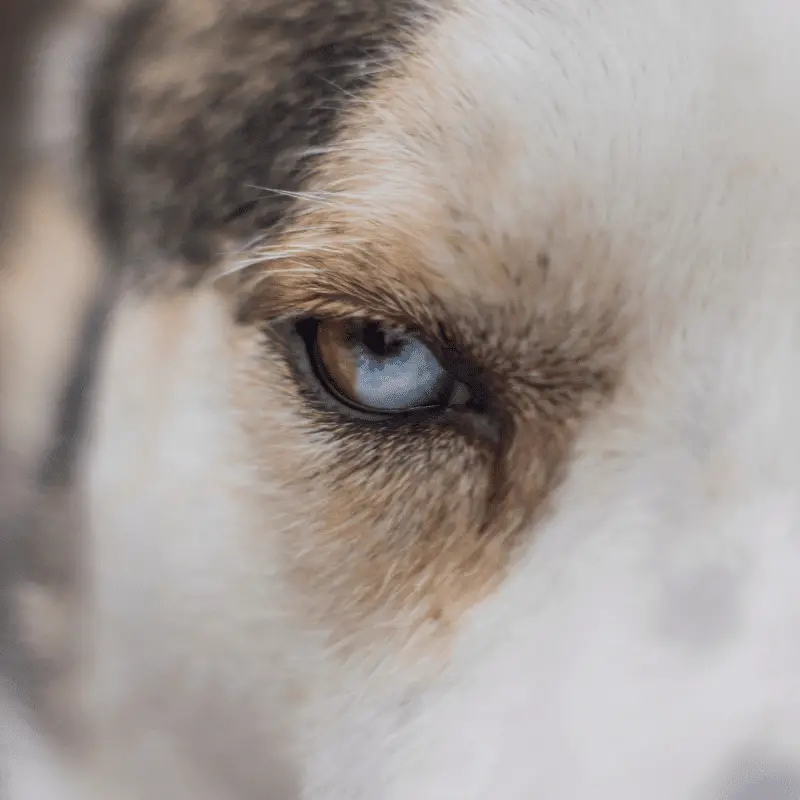
It is one of the rarest types of eye colours that you can find in the Siberian huskies. The parti-eyes or split eyes indicate that the husky has brown and blue shade in one of its eyes.
The unique eye colour makes the dogs look extraordinary and sometimes freakish. However, this two-toned eye does not impact the optical health of the huskies in anyways.
The eye colour of the Husky puppies may change.
When it comes to the husky puppies’ eye colour, you experience a fantastic factor. When the puppies open their eyes for the first time, you will notice that each puppy in the litter has blue eyes. Don’t get excited if you see all your husky puppies blue eyes. There is no guarantee that it will stay the same as they grow. But things will change over the weeks as the puppies grow.
The fact is that the puppies’ eye colour can change even when they are 4-5 weeks of age. Once they pass the fifth-week mark, the eye colour mostly becomes stable—however, some instances where the puppies’ eye colour has changed even later.
Determining the eye colours of the Husky puppies
The kennel clubs worldwide have acknowledged the different eye colours of the Siberian huskies. Still, knowing the colour of the eyes of the husky puppies helps the breeders.
It enables them to offer people suitable puppies that fulfil their requirements. As all the husky puppies are born with blue eyes, it is difficult for the breeders to determine the colour.
That being said, there are some tricks that you can apply to determine the colour of the husky puppies. The following steps will help you to achieve that.
Step 1
Take the husky puppies out of the room and check their eyes in the sunlight. It might help you to see the true colours of their eyes.
Step 2
Take photos of the husky puppies. It would help you to track their eye colours. The blue and brown colours of eyes have different shades. If you do not have photographs with you, it could be difficult to remember their details.
Step 3
Researching is an excellent way to find out the eye colours of the Siberian husky puppies. Go online or to a book store to find breed guides of huskies with coloured pictures. Compare the photos you have taken to the images to determine what the experienced breeders are talking about the different eye colours. For example, some breeders call the brown shade of the eyes gold or hazel.
Step 4
Check the American Kennel Club calendar or the Kennel clubs of your area to find a dog show close to your place. Visit the dog show to take a look at the huskies present there. You can also talk to the show owners to determine the husky puppies’ eye colours.
Conclusion
Some people believe that only the huskies with blue eyes are of the true breed. It is one of the myths that you should not follow. All the eye colours specified in this article are accepted by the kennel clubs worldwide. So, the colour of your Siberian huskies’ eyes would not make any difference if you choose to participate in any dog shows.
The Huskies can be fantastic friends to their human companions. If you take good care of your dog, the husky can be the caring and loving companion you need so desperately. Plus, you should love your Siberian huskies and take good care of them irrespective of their eye colour.

